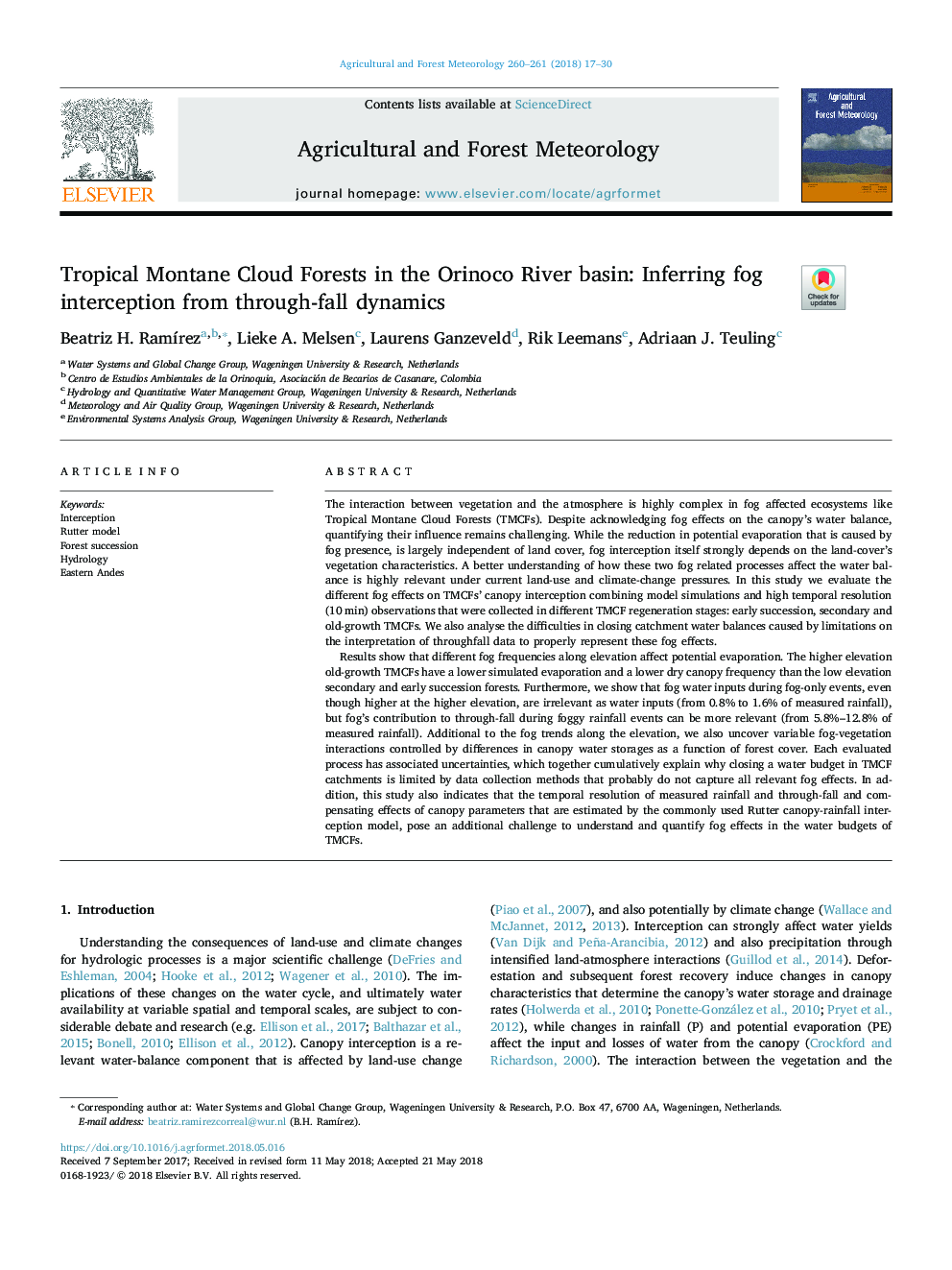| Article ID | Journal | Published Year | Pages | File Type |
|---|---|---|---|---|
| 6536599 | Agricultural and Forest Meteorology | 2018 | 14 Pages |
Abstract
Results show that different fog frequencies along elevation affect potential evaporation. The higher elevation old-growth TMCFs have a lower simulated evaporation and a lower dry canopy frequency than the low elevation secondary and early succession forests. Furthermore, we show that fog water inputs during fog-only events, even though higher at the higher elevation, are irrelevant as water inputs (from 0.8% to 1.6% of measured rainfall), but fog's contribution to through-fall during foggy rainfall events can be more relevant (from 5.8%-12.8% of measured rainfall). Additional to the fog trends along the elevation, we also uncover variable fog-vegetation interactions controlled by differences in canopy water storages as a function of forest cover. Each evaluated process has associated uncertainties, which together cumulatively explain why closing a water budget in TMCF catchments is limited by data collection methods that probably do not capture all relevant fog effects. In addition, this study also indicates that the temporal resolution of measured rainfall and through-fall and compensating effects of canopy parameters that are estimated by the commonly used Rutter canopy-rainfall interception model, pose an additional challenge to understand and quantify fog effects in the water budgets of TMCFs.
Related Topics
Physical Sciences and Engineering
Earth and Planetary Sciences
Atmospheric Science
Authors
Beatriz H. RamÃrez, Lieke A. Melsen, Laurens Ganzeveld, Rik Leemans, Adriaan J. Teuling,
